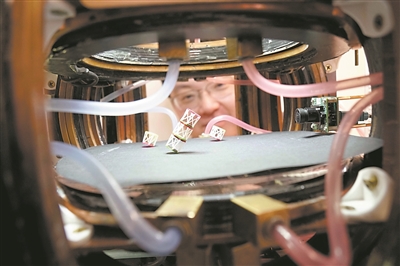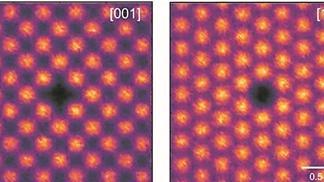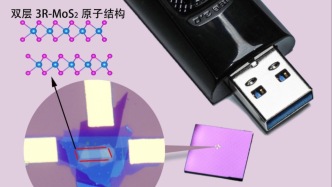
A team from Princeton University in the United States has developed an innovative material that can expand, deform, move, and perform tasks according to electromagnetic instructions like a remote-controlled robot. This material has no traditional motors or internal gears, but it can change shape and move. In an article published in the latest issue of Nature magazine, the team describes how to draw on the art of origami to create this structure that blurs the line between robot and material.
This innovative material is a metamaterial whose properties are determined by its physical structure rather than its chemical composition. Using simple plastics and custom magnetic composites, the team built a modular assembly called the "Metabot" that can be remotely controlled. Using magnetic fields, they can change the structure of the metamaterial, making it expand, move and deform, all without touching the material itself.

Engineers have created a material that can expand, deform, move, and follow electromagnetic commands like a remote-controlled robot. Image credit: Princeton University
The metamaterial is composed of many reconfigurable units that are mirror images of each other. The chiral relationship between these units makes complex movements possible. Only slight electromagnetic stimulation can cause Metabot to perform large-scale twisting, contraction and other movements. This technology is expected to promote progress in many fields such as soft robots, aerospace engineering, energy absorption and body temperature regulation.
Another potential application is in the medical field. For example, in the future, similar robots can be used to precisely deliver drugs to specific parts of the body, or assist in surgical repair of damaged tissues.
The team also demonstrated the material's ability to act as a thermostat. In experiments, they successfully adjusted the surface temperature from 27 degrees Celsius to 70 degrees Celsius and back again.
The key to the new material is its geometric design. The team made a plastic tube with a specific arrangement of support struts that twists when compressed and compresses when twisted. The design is based on the Kressling pattern in origami. By connecting two mirror-image Kressling tubes, the team created the basic building block and made each part respond independently to a precisely designed magnetic field.
Due to the asymmetric behavior brought about by chirality, this material can exhibit hysteresis similar to that in physical systems, that is, the response of the system depends on the historical changes of its internal state. This property is very useful for simulating complex systems that are difficult to model mathematically. In the long run, this metamaterial may even be used to design physical structures that mimic the logic gates of computer transistors.
【Editor-in-Chief’s Comments】
This material challenges our traditional understanding of robots and instantly reminds people of the scenes in "Transformers". It may mark the beginning of a new era in robotics. In this era, intelligent behavior can be directly realized through the properties of the material itself without the need for complex internal structures. This development will greatly simplify the design of future robots and improve their adaptability and flexibility. In addition to its application in the medical field, this technology can also provide solutions for improving the performance of aviation equipment or improving the energy efficiency of buildings. In the long run, it is also a revelation for us to think about the relationship between materials, machines and intelligence.
(Original title: Inspired by origami art, a new type of movable and deformable metamaterial is invented)
- pmTOeTDAck04/25/2025


